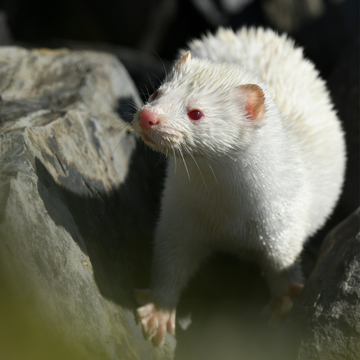Jute is among the top fabric regarding sustainability and eco-friendly material. However, jute is not just eco-friendly but an extremely durable material that can withstand severe wear and tear. However, people aware of sustainability and eco-friendly know everything about jute but are new to the vegan lifestyle often ask themselves, is jute sustainable? So, here in this blog, we will provide all the necessary information about jute fabric.
What Is Jute Made Of?
Jute is a long, soft, shiny natural fibre from the jute plant. Though there are several species of jute, the jute fabric is made of white jute, while the Tossa jute is another species used to make the material. The Tossa jute is of high quality compared to white jute, but at the same time, it is also hard to cultivate.
But once processed, the jute fibre is used to make ropes, bags, carpets and many more. If you have a burlap bag or picnic basket at home, the chances are that those might be products made of jute.
Jute is also called a golden fibre because of its appearance and cost-effectiveness. Jute fibres are light and soft and have a yellowish-brown colour with a golden shine. In addition, the jute fabric is easy to grow, biodegradable, and the most affordable natural fibre available in the market.
History Of Jute:
Jute has been grown in India for textile purposes for the past 5000 years, but its origins date back to 3000 BC. Jute is obtained from the stem of two different plants, White jute and Tossa jute. Although India produced other natural fibres like cotton at the time, jute was the country’s central textile fibre. However, the production continued to flourish even after European Colonization came into force. Also, the jute plant later became the major cash crop that helped to fund the British Colonial movement. But nowadays, it is still composed in countries because of its adaptability and benefits to the textile industries and economies.
The Jute-Making Process:
After harvesting the jute plant, it is submerged in slow-running water for around 10 to 30 days. During this time, the bacteria dissolve the adhesive material that holds the plant fibres together. And this whole process is known as “retting”.
After completing the above step, the fibres can be separated from the non-fibrous matter. After that, the separated fibres are washed, dried, sorted and sent to mills where they are treated to make jute yarns. Over time, the jute yarns are sent to manufacturers for making sacks, bags, ropes, and other eco-friendly products.
Is Jute Eco-friendly?
This question strikes many people whether jute is eco-friendly or not. Let us discuss the answer; jute is certainly eco-friendly and is among the world’s top eco-friendly fibres. It is because it is entirely biodegradable, absorbs carbon dioxide, and releases oxygen. Moreover, it grows without pesticides or fertilizers and can enhance the soil fertility it produces. It does not release microfibers, thus reducing water pollution. So jute is not just eco-friendly but also sustainable.
How Is Jute Sustainable?
Though many factors make jute sustainable, here we will discuss a few important ones. Firstly, the ability of the jute to reach maturity in less than six months means it will require less land to cultivate it. Secondly, there is no need to intrude on the wilderness and natural habitat because of its growth efficiency; it needs little intervention to grow and restore. In addition, it depends on natural rainfall, which means it needs less water to survive compared to cotton.
Now, if you are still confused is jute natural or synthetic, then you need to understand that jute is biodegradable, which means it can be recycled. Jute can be recycled 100 per cent. Besides using the same fibres of a product for manufacturing another, you can take your jute goods like mats, ropes, and bags that are too old to use and turn them into compost for the plants. This proves jute is highly environmentally friendly.

What Is Jute Fabric Used For?
The use of jute is nearly endless; it is a functional fibre and can be used independently or mixed with a range of other materials. The thread can be made into textile-like yarn, sacking, and twine, and it can also be used to generate rope, rugs, clothing and burlap.
1. Rugs-
Rugs made from jute are an excellent addition to home decoration because jute is a soft material. Rugs can be round, square, or rectangular; jute rugs look fresh and bring naturalness, personality, and warmth to the surroundings. They are pretty durable and do not require much maintenance. However, you need to keep them away from humidity.
2. Ropes-
Jute ropes are versatile and highly resistant to heat, sunlight, and heavyweight, but they can be used in crafts, sewing and decoration. Most natural fibre ropes have a life of about ten years if proper care is taken. However, you should avoid getting a jute rope wet and store it in a low-humidity environment to extend its life.
3. Burlap-
Burlap is a fabric well known as one of the best packaging materials because of its resistance to heavyweights and tears. Along with packaging, burlap can be used in decoration, crafts and gardening. If you are familiar with new trends, you might have heard of biodegradable tote bags. Many bags are made of jute burlap; the fabric can be dyed and printed as per your choice.
4. Clothing-
Many clothing brands and designers are realizing the impact of fast fashion on the environment and are constantly searching for new eco-friendly fabrics to create affordable and sustainable clothing. Although jute is not popular in western style, jute footwear and jackets are earning their spot slowly. In addition, new softening techniques are being discovered to make jute more comfortable to wear because the fabric can be harsh on the skin if not blended with other fibres like nylon.
How Does Jute Fabric Impact The Environment?
Jute has a positive impact on the planet. It is one of the few natural fibres that provide environmental benefits rather than being damaging. The jute is known to return nutrients to the soil and helps to retain moisture. Moreover, with all kinds of fibre crop cultivation, there are correct and wrong ways to cultivate jute. If jute is grown fully by following basic practices like crop rotation, this crop could help the surrounding soil. While jute production generally does not require chemical fertilizers and pesticides, cultivators use these toxic chemicals in their production processes.
Final Thoughts:
In the above blog post, we have discussed an in-depth guide about jute which also clears the answer to the question that jute is a sustainable and eco-friendly material. Moreover, we have also discussed the environmental impact of the jute fabric.
Also read some amazing information about Sustainable bags and backpacks The Luna Story So Far







